Manah 2009
Manah 2009
The walled city of Manah has been a regular part of the ENHG Nizwa weekend for several years. The abandoned
collection of houses, shops and mosques is now being carefully restored.
The University of Liverpool has been studying the city's streetscape for several years; a publication
of its research is expected later in 2009.
Each house in the city -- and there are approximately 65 houses -- has its own well. Navigating around
the city includes walking along impressive streets and through arched passageways.
A small section inside the walled city was reserved for agriculture; the remains of the well, reservoir
and falaj system are still visible. In a corner of this section of the city workers are preparing the
mud bricks used in the reconstruction work.
The main entranceway to the city is marked by a spectacular square tower while other corners of the
complex are marked by stone towers plastered with mud.
In many of the houses, there are blankets, storage boxes and the remains of pottery vessels. In addition,
along the interior walls of most houses are small alcoves, the roof of which is still covered with soot,
evidence these once held small oil lamps. The interior rooms are decidedly dark though cool. Most of the
houses are at least two stories tall.
Several mosques are also being restored. These are decorated with spectacular wall engravings.
The Ministry of Tourism's booklet on the Dhakiliya district notes that the walled city we visit
is actually Harrat Al Bilad; Manah is the Wilyat that is composed of 10 villages with a total population of
approximately 10,000 residents.
"The most interesting part of Manah is in the old area of Harrat Al Bilad. A visit here is like
stepping back in time," the brochure states. "The entire abandoned village, walled up for defence, still
stands in all its past glory. Now deserted, many of its mud and rock houses are deteriorating, but you can
wander through its arched alleyways, peep through the doorways, and imagine life here in the
not-so-distant past."
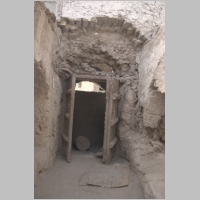
One of the original gates
|
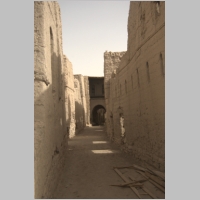
The side streets
between the houses
|
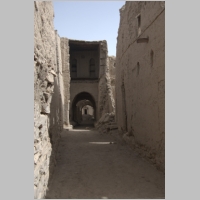
Ahead, one of the
coverage passageways
|

There are no windows
onto the streets
|
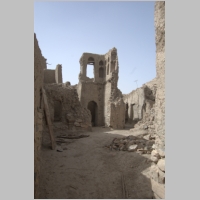
Some of the houses
have collapsed
|

A grinding stone
|

Inside one house, door
leaning against the wall
|
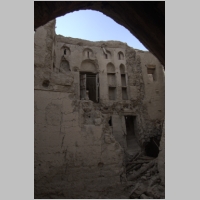
Shelving on a second-
storey wall
|
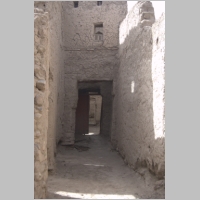
Houses bridged over
pedestrian walkways
|
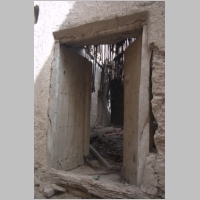
Doors were still
attached in many doorways
|
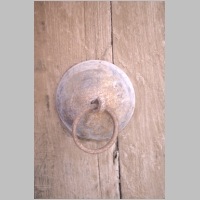
Door bell
|
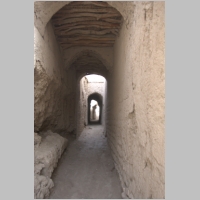
One of the
covered passageways
|
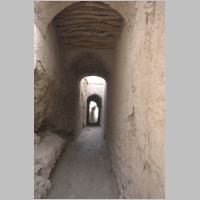
The timber ceiling framing
is visible
|
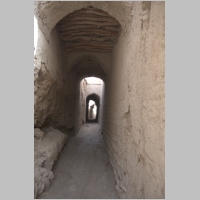
Many such passageways
remain in Manah
|

Mud plaster covers
the walls
|
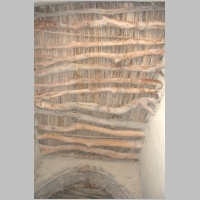
Detail of the
ceiling construction
|
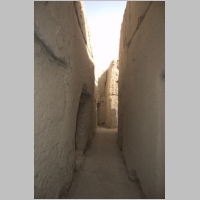
A narrow passageway
|
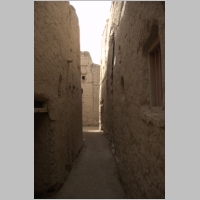
Restoration work began
last year
|

The original mud bricks and
date palm timbers
visible
|

One of the more
spectacular arched streets
|
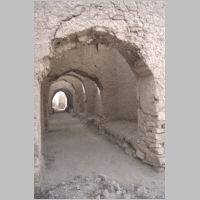
This passageway separates
the two exterior walls
|

The ends of timbers
visible above the arch
|
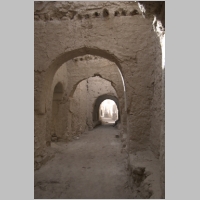
Some arches were peaked,
some rounded
|
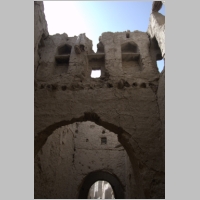
Remains of a house that
once existed above
|

Blanket hanging from peg
|
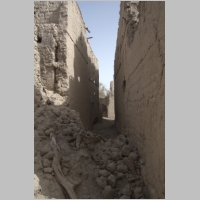
Rubble spilled over
into the street
|
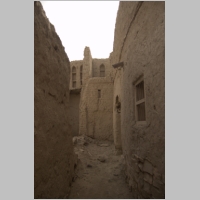
Metal drainpipe (right, above)
suggests
recent occupation
|

Second storey building
collapsed
|
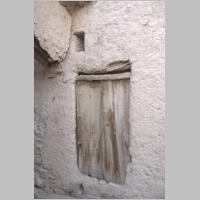
This house remains sealed
|
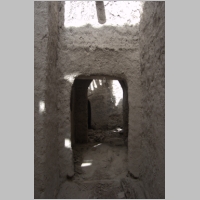
Light and shadows
|
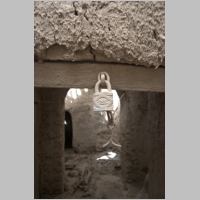
The doors are gone but
the lock remains
|

Some houses are in
very poor condition
|
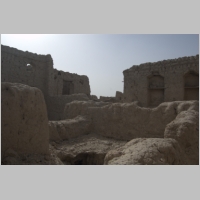
Second storey view
|
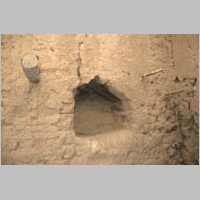
Pegs and alcove
|
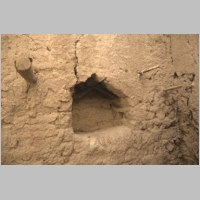
The alcove once held
an oil lamp
|
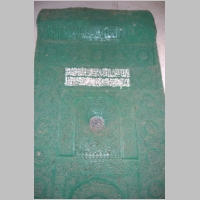
Interior of one of
the mosques
|

Koranic inscription
|
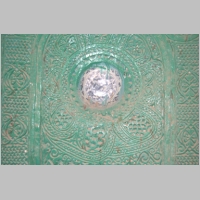
Porcelain plate encased
in the wall
|
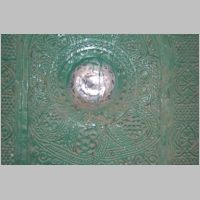
Detail
|
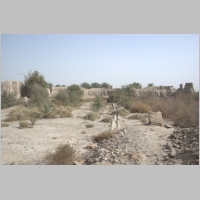
The farming area
|

View from the fields towards
the houses
|
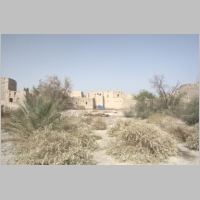
View in farming area
|
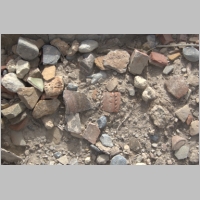
Pottery in abundance
|
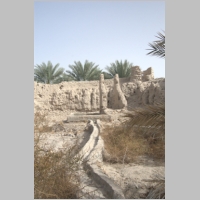
Falaj, reservoir and supports
of lifting device
|
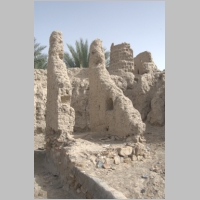
Detail of the lifting device
|

Detail of reservoir
|
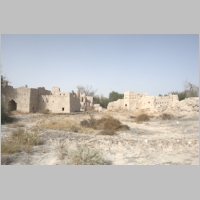
View from reservoir
|
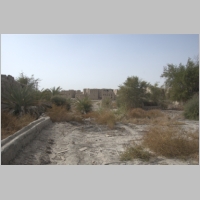
Cement was used to construct
some of the aflaj
|
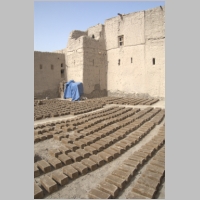
New mud bricks drying in
the sun
|
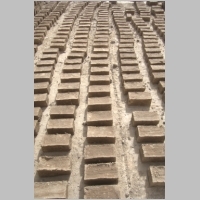
Traditional building
materials being used
|
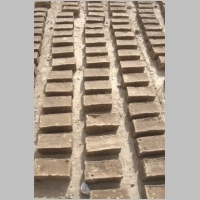
The mud is cured before
the bricks are formed
|
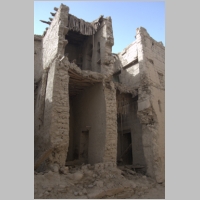
Ruins of one house
|
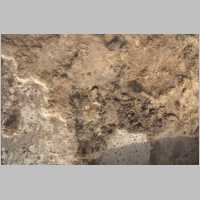
Mud and straw mix
|
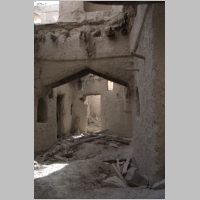
Arches alone remain
|

Sun breaking through
the collapsed roof
|
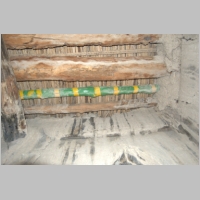
One of the decorated
ceiling supports
|

Door still in situ
|
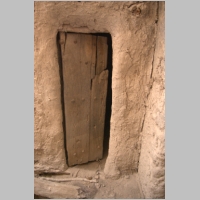
Normal color tones
|

An interior corridor
|

An interior corridor
|
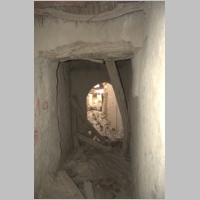
Corridor showing debris
|
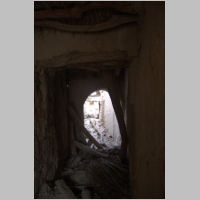
Houses were very dark
|

Broken pot at bottom
of stairs to rooms above
|
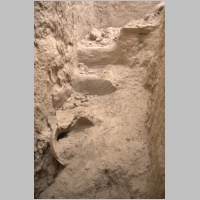
Detail
|
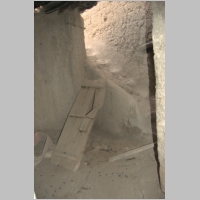
Another staircase
|
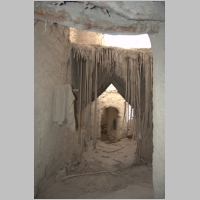
Barasti roof material
|

Notice the timbers and use
of barasti
|

Peaked interior arch
|
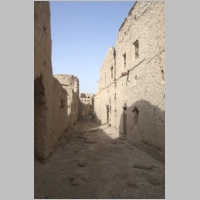
Restoration work will take
several years to
complete
|
| 



































































